Irondequoit Formation
The resistant beige-coloured Irondequoit Formation often is the easiest to identify because it forms a natural protective ledge about 1 metre thick. It is a vuggy dolostone made out of fragments of hard-bodied or shelled organisms like crinoids.

i26: Rock Formation C2 - Sediment Structure

Waterfall Overview & Stratigraphy

i6: Rock Formaiotn A1 - Color Pattern

i7: Rock Formation A2 - Sediment structure/feature
Thorold Formation
The interbedded sandstone and shale of the Thorold Formation is full of well-preserved sedimentary structures. There is likely an unconformity, or break in time, between the Thorold Formation and the underlying Grimsby Formation.

East Cliff Stratigraphy - Center
Examine this outcrop from further back.

i28: Rock Formation C2 - Mystery Color Pattern & Sediment Structure

i34: Rock Formation E2 - Sediment Structure

Groups, Formations, and Members
Geologists like to create a stratigraphic heirarchy. Here, there are two "Groups", and seven "Formations". However, establishing this heirarchy is an evolving problem and formations are regularly re-assigned as more information comes to light.

i33: Rock Formation E2 - Sediment Structure and Rock Type

i12: Rock Formation A3 - Dolostone with Fossils

i5: Rock Formation A1 - Sediment structure
Reynales Formation
The Reynales Formation is a dolostone made of compacted remains of organisms living in a shallow sea. It can be distinguished from the underlying Thorold Formation by it's limestone content, which gives it a slighly warmer beige colour.
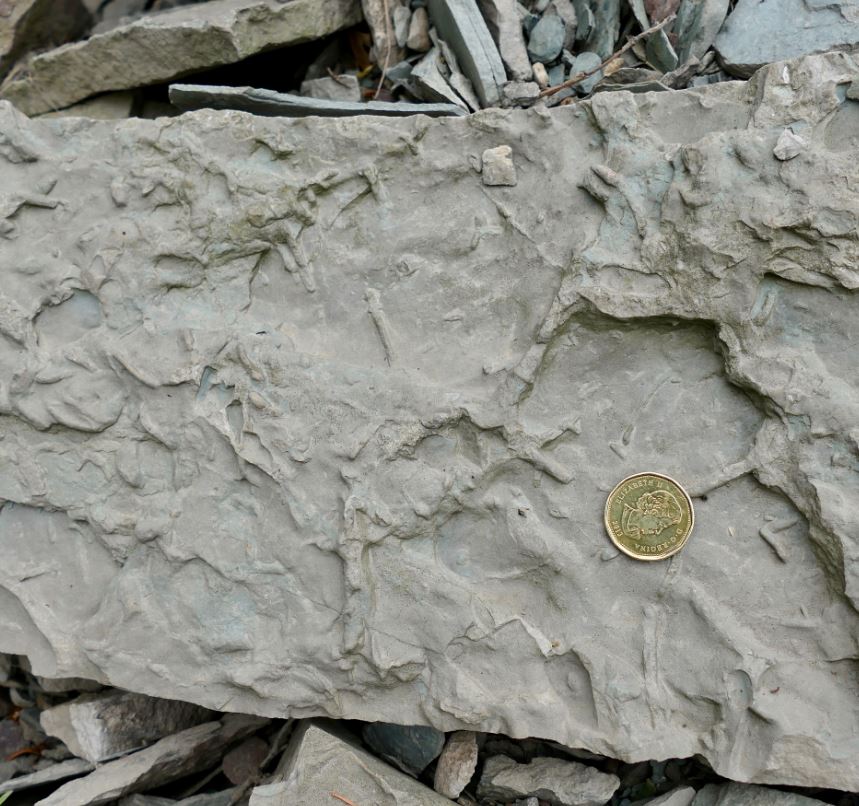
i8: Rock Formation A2 - Sediment structure/feature
Stratigraphy
Stratigraphy is the study of rock layers. From this vantage point we can see clearly how the rock layers change in colour, thickness, and resistance to weathering, which allows us to pick out several named formations. After we have examined the stratigraphy from here, we will move closer to look at what materials make up each formation.
Reynales Formation
The Reynales Formation is a dolostone made of compacted remains of organisms living in a shallow sea. It can be distinguished from the underlying Thorold Formation by it's limestone content, which gives it a slighly warmer beige colour.

i11: Rock Formation A3 - Dolostone with Fossils
This block is full of internal molds of Pentamerid brachiopods. It likely belongs to the Merritton Member of the Reynales Formation.

i27: Rock Formation C2 - Mystery Sediment Structure

i24: Rock Formation C2 - Sediment Structure
What happened here in regards of erosion and deposition?

i29: Rock Formation C2 - Mystery Sediment Structure

i4: Rock Formation A1 - Rock Type & Erodibility

East Cliff Overview - Right Side
Examine this outcrop from further back.

Overview
Examine this outcrop from further back.

i10: Rock Formaiton A3 - Sideview of Dolostone

The Falls
Many rivers and creeks spill over the Niagara Escarpment on their way north to Lake Ontario. East of Hamilton, Red Creek tumbles over the Escarpment as a 'cascade waterfall' at Albion Falls

i9: Rock Formation A2 - Sediment structure/feature

i17: Rock Formation B2 - Geologic Process & Sediment Structures
Rochester Formation
Just at the very top of this section, we can see the Rochester Formation. These grey shaley units are recessive and often poorly exposed.

East Cliff Overview - Left Side

Stratigraphy

Stratigraphy
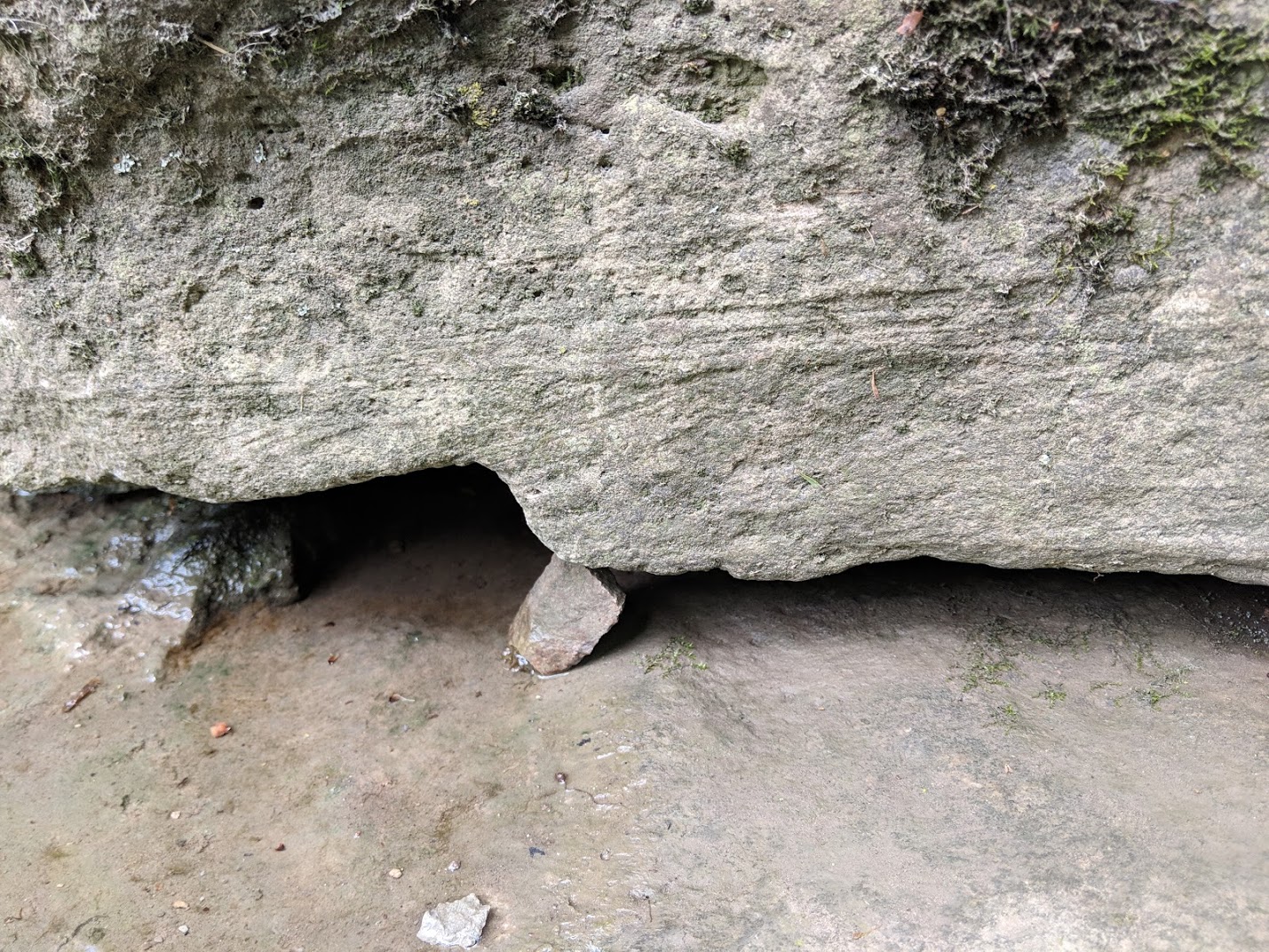
Sedimentary structures on bedding plane
Examine this bedding plane. What are these sedimentary structures?
Irondequoit Formation
The resistant beige-coloured Irondequoit Formation often is the easiest to identify because it forms a natural protective ledge about 1 metre thick. It is a vuggy dolostone made out of fragments of hard-bodied or shelled organisms like crinoids.

Sedimentary structures in cross section
Examine these sedimentary structures, seen here in cross-section.

i22: Rock Formation C2 - Rock Type and Sediment Structure

North Cliff Strata Overview
Compare the strata separated by yellow bolded lines in this image with your knowledge of the local stratigraphy. What formations are these? Can you trace this contact across the outcrop?

I23: Rock Formation C2 - Mystery Sediment Structure
Lockport Formation
The Lockport Formation is the primary caprock of the Niagara Escarpment. It is made out of a tough, resistant dolomite, formed in a warm shallow sea out of the degraded remains of shelled animals. It is the youngest rock layer seen at this site.

i18: Rock Formation B2 - Beds Erosion & Sediment Structures
Grimsby Formation
The Lower Silurian Grimbsby Formation is recognized here by the redder colouration compared to the Thorold Formation.

i30: Rock Formation D5 - Rochester Formation
The Rochester Formation is composed of thinner beds of grey-beige calcareous shales and dolostones.

i15: Rock Formation B2 - Sediment structures

i13: Rock Formation A4 - Dolostone with Crinoids

i25: Rock Formation C2 - Mystery Sediment Structure & Rock Formation

i32: Rock Formation D7 - Ancaster Member
This beige dolostone with white chert nodules is the Ancaster Member. It is the top, and therefore youngest, unit visible at Albion Falls.

Bottom of Falls Overview (Rock Formation E2)

Upper Beds - Outcrop Overview
Albion Mill
The Albion grist mill, first built in 1795 was the centre of one of the earliest settlements in the Hamilton Region. It sat just about here on the flat ledge halfway down the falls and took advantage of a small diversion in the stream.

i3: Rock Formation A1 - Rock types
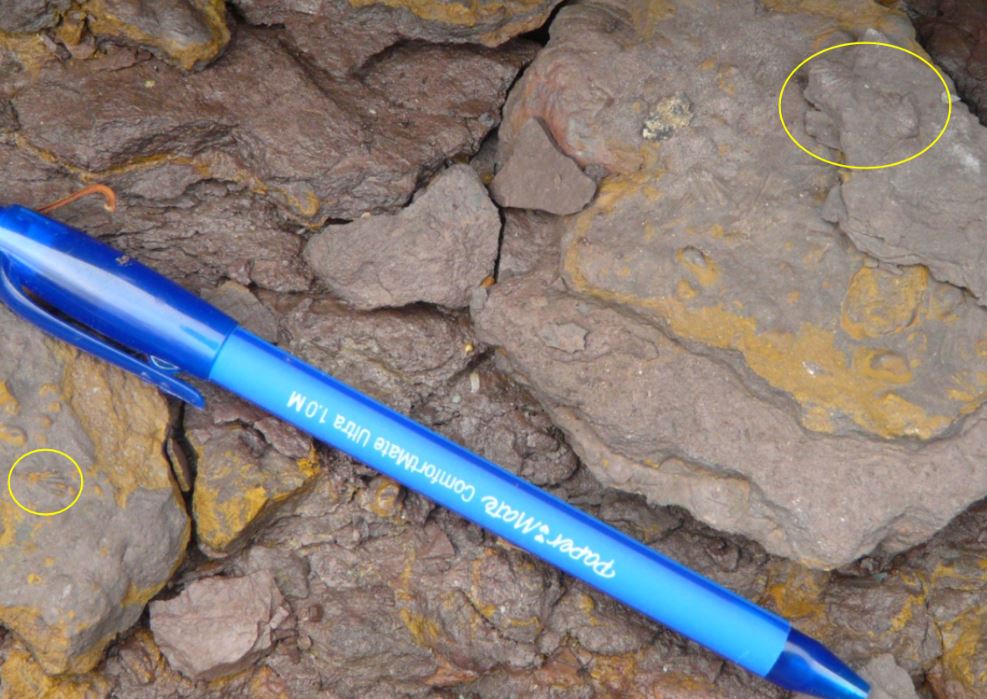
i2: Rock Formation A1 - Rock with little fossils
Thorold Formation
The interbedded sandstone and shale of the Thorold Formation is full of well-preserved sedimentary structures. There is likely an unconformity, or break in time, between the Thorold Formation and the underlying Grimsby Formation.
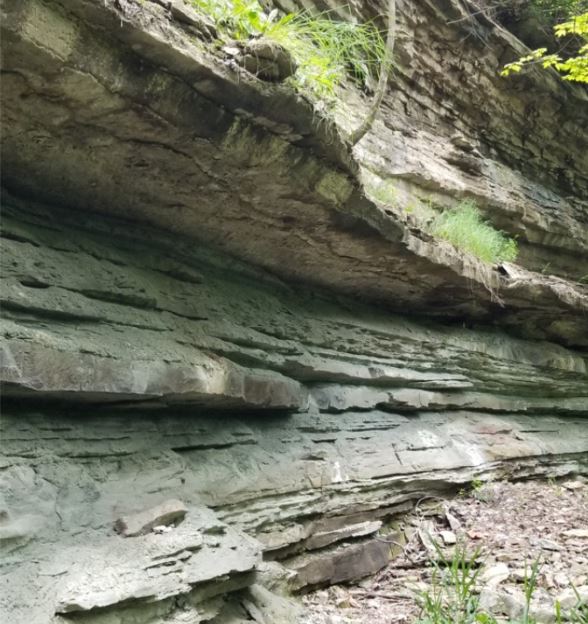
i19: Rock Formation B2 - Differential erosion of layers

i31: Rock Formation D6 - Gasport Member
The Gasport Member is a crinoidal dolostone and part of the Gasport Member.

i1: Rock Formation A1 - Mystery sediment structures
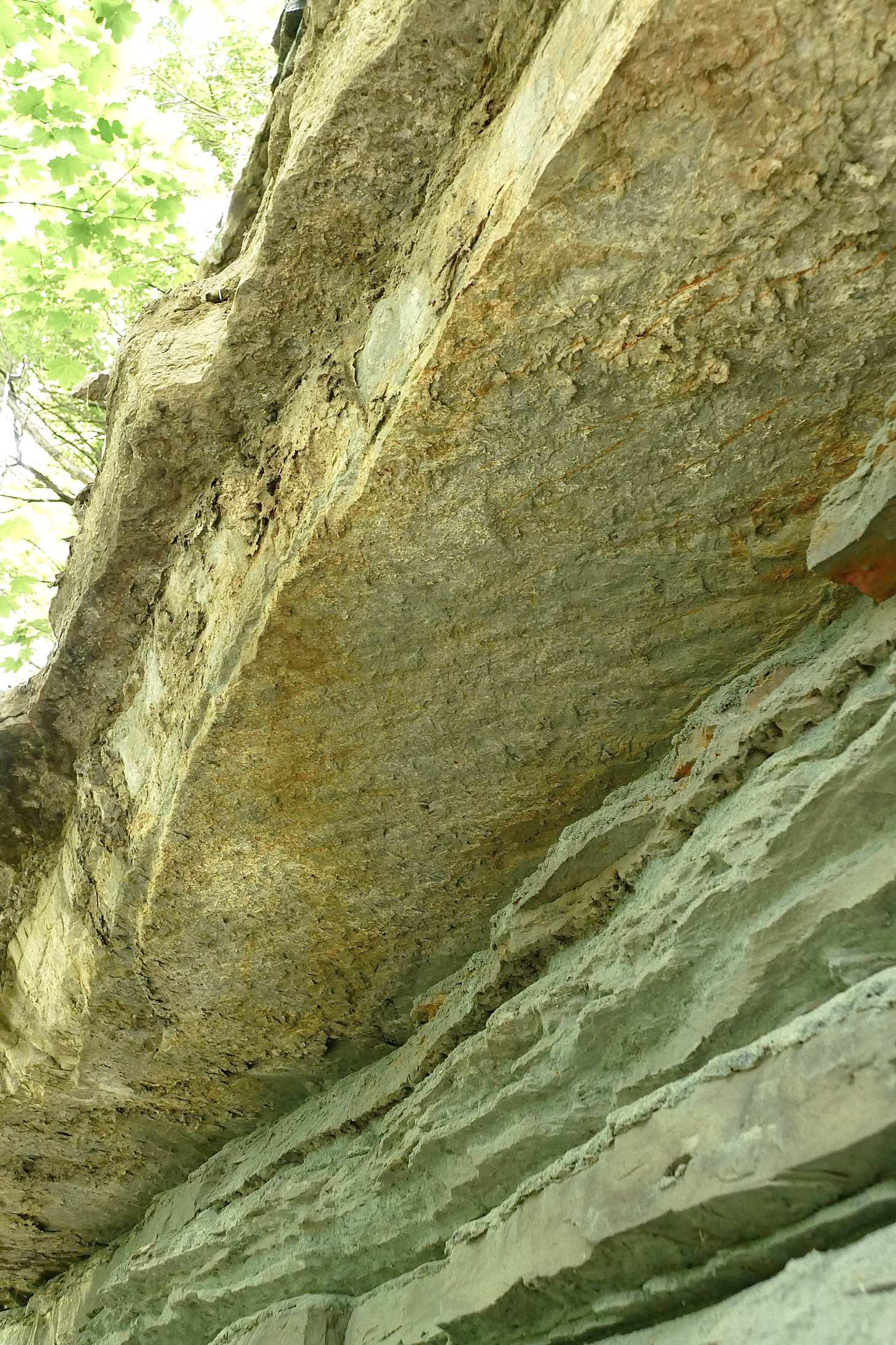
i16: Rock Formation B2 - Underside & Sediment Structures

i14: Rock Formation B2 - Mystery Sediment Structure








































